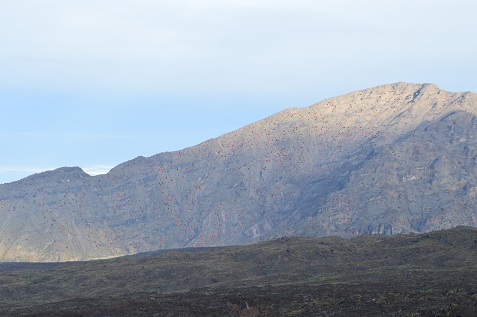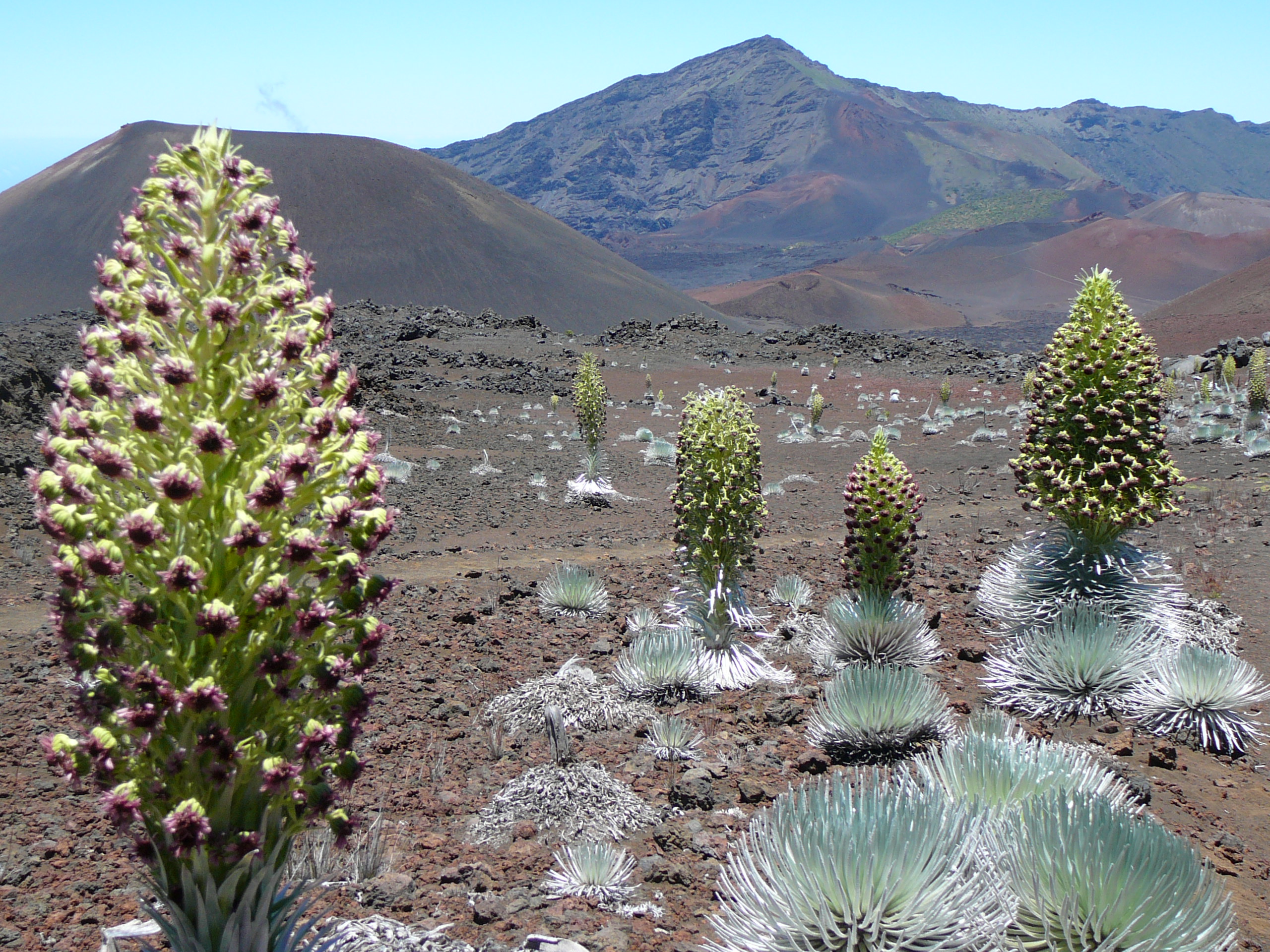|
You are viewing ARCHIVED content published online before January 20, 2025.
Please note that this content is NOT UPDATED, and links may not work. For current information,
visit https://www.nps.gov/aboutus/news/index.htm.

NPS
Contact: Polly Angelakis, 808-572-4450 Between December 8 and 11, 2014, Haleakalā National Park will use contracted helicopters to eliminate 3000 invasive pine trees in the park.These trees are located on terrain and cliffs that are too steep or remote for park staff to safely access on foot. The removal will conserve the iconic crater views and protect species that depend on native habitats for survival. In case of bad weather, alternative dates will be January 13-15, 2015. No trail, campground, road, cabin, or other closures will occur during this project. Silversword--endemic, threatened species. NPS Three non-native pine species (Monterey pine, Mexican weeping pine, and maritime pine) are spreading through the crater. These pines displace endemic and endangered species, change soil chemistry, and increase the potential for wildfire in habitats not adapted to fire. "While park biologists work hard to control pine trees that are accessible by trail, many are found in places too dangerous, steep, or remote to reach safely," said park superintendent Natalie Gates. "Helicopters will allow removal of this invasive species with fewer safety risks for our staff."
Iconic crater view. NPS Pilots and "spotters" have been trained to target the pines without endangering native species. Park employees will be stationed at park overlooks to answer questions from the visiting public during the helicopter operations. This is the first of two phases for the pine removal project. The second phase is scheduled for summer of 2015. |
Last updated: February 28, 2015


